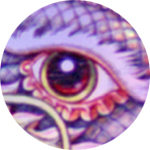
Originally Posted by
Sal Canzonieri

From the research I've been doing, it seems that there were different methods practiced by different factions within and nearby Shaolin grounds.
Books such as that by Cheng only show one of many different traditions, and I agree because these books are the only ones found today people assume that they are the ONLY methods taught there.
But other books from the 1500s and 1600s show that there were completely different factions doing totally different techniques with different weapons and each had their own set of followers, some in the many thousands and some in the few dozens.



 Reply With Quote
Reply With Quote








